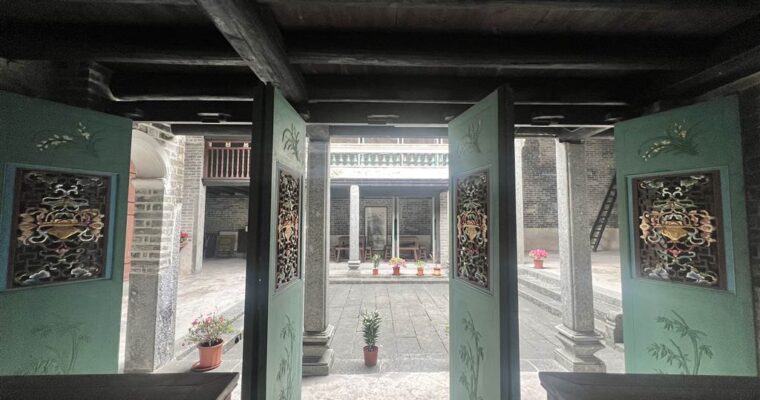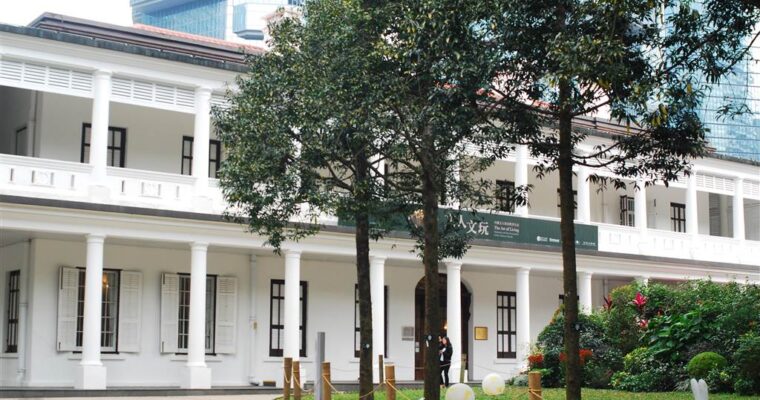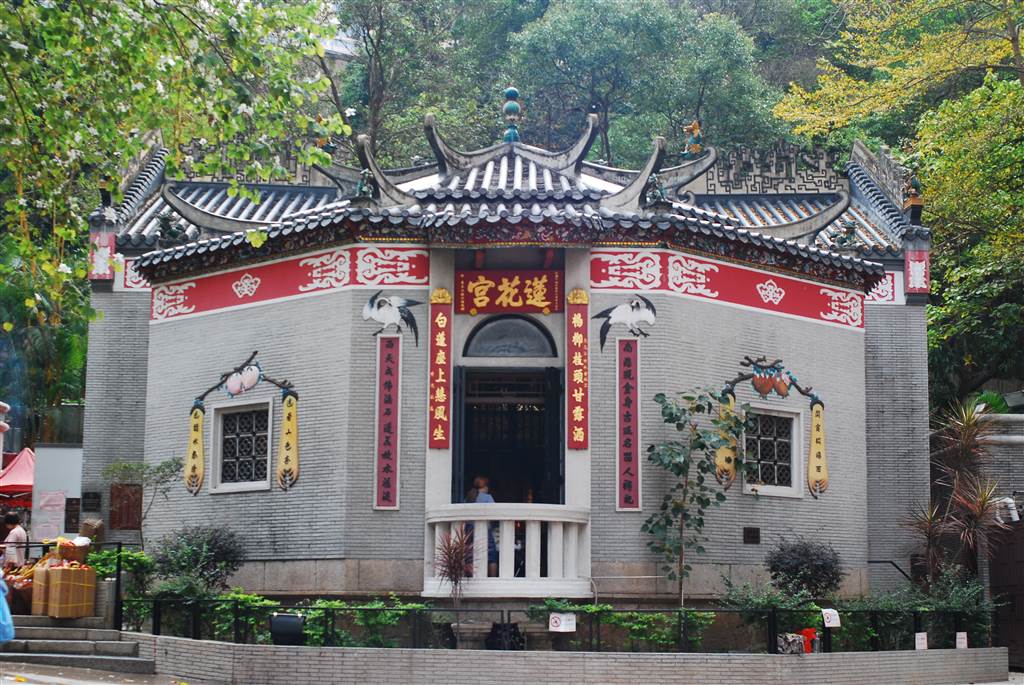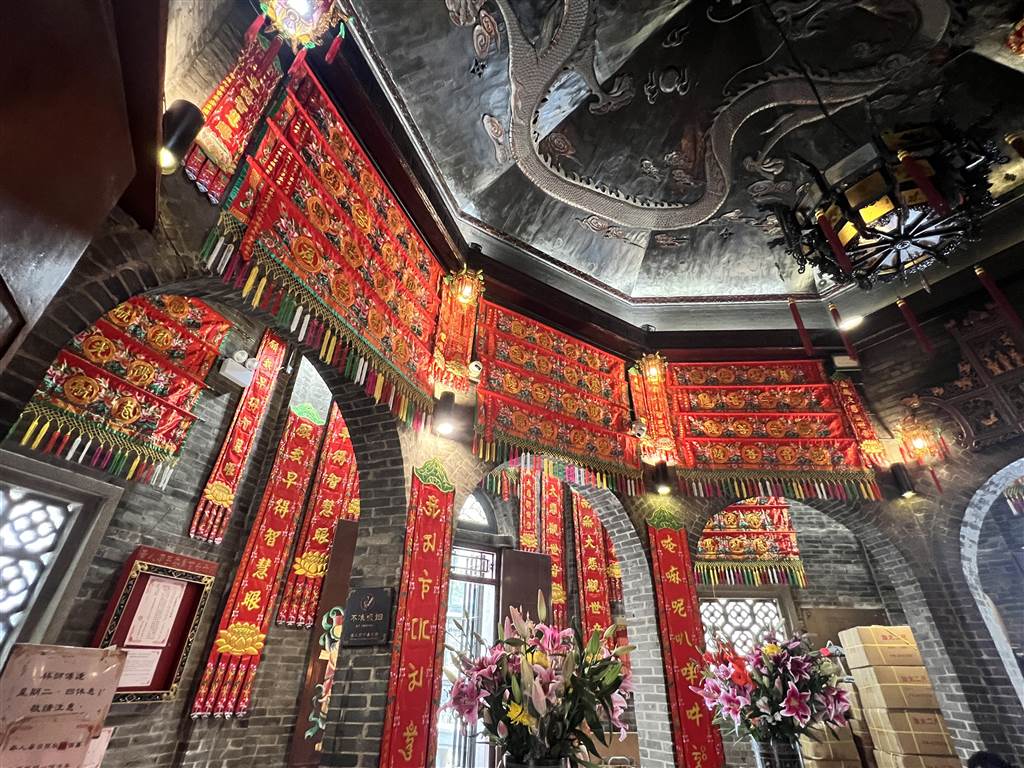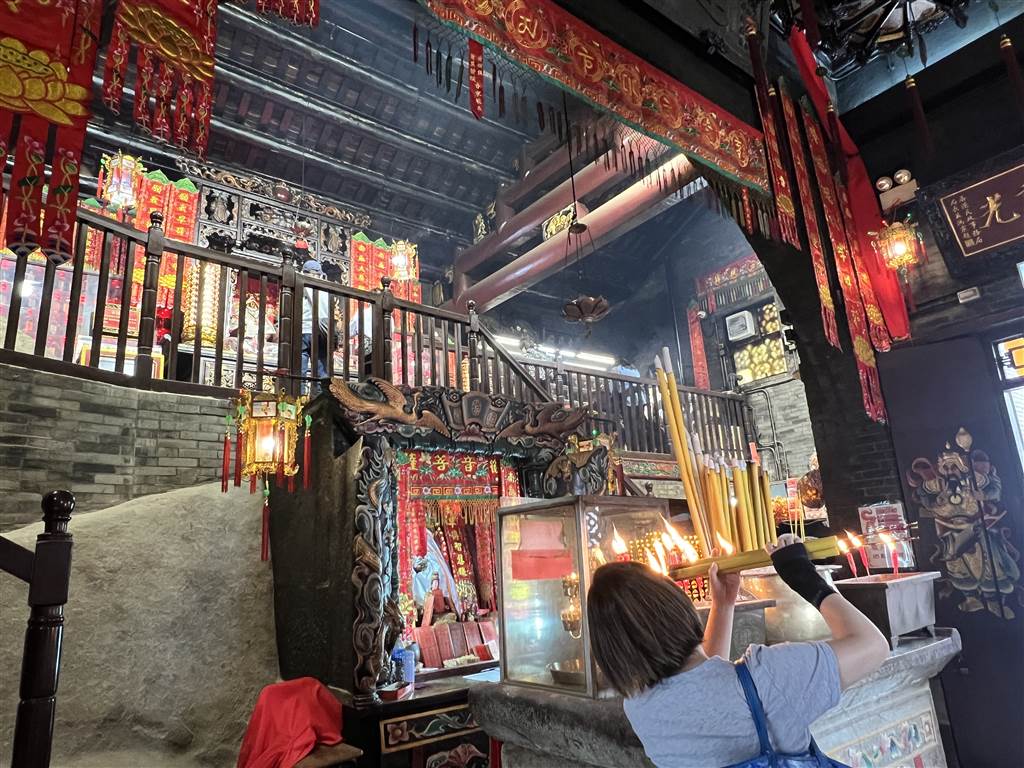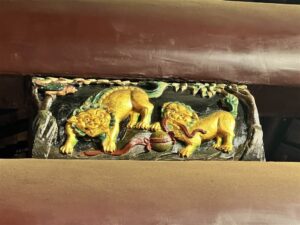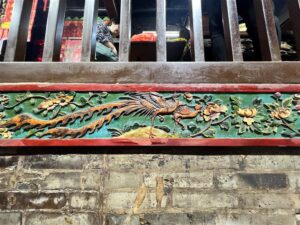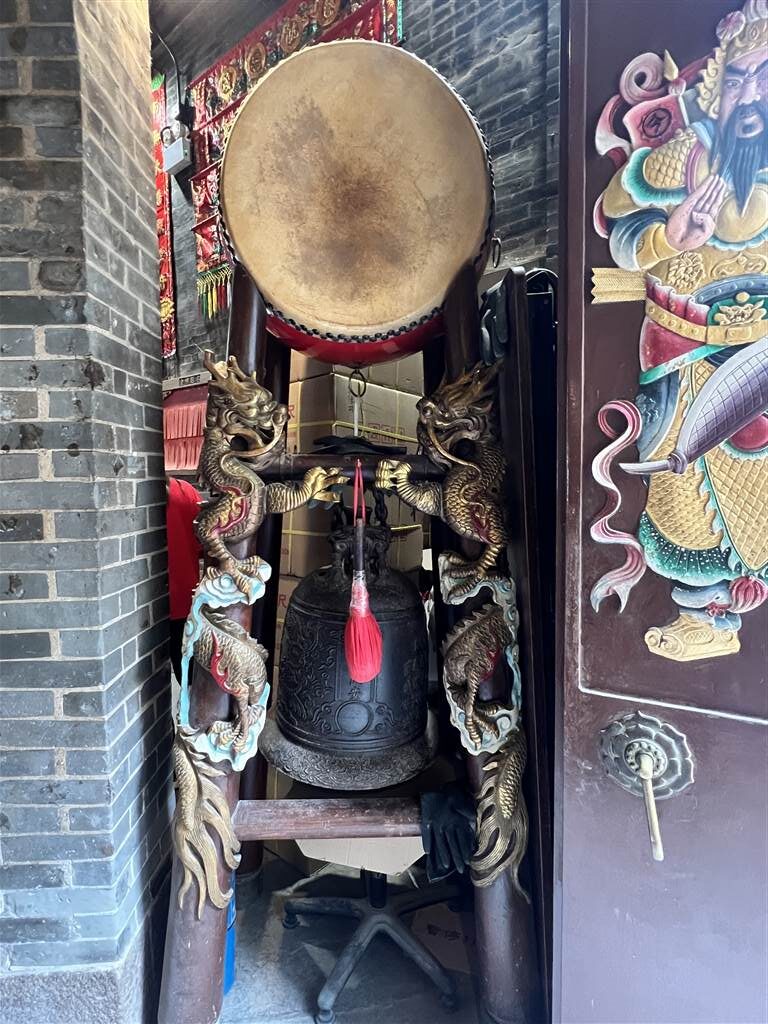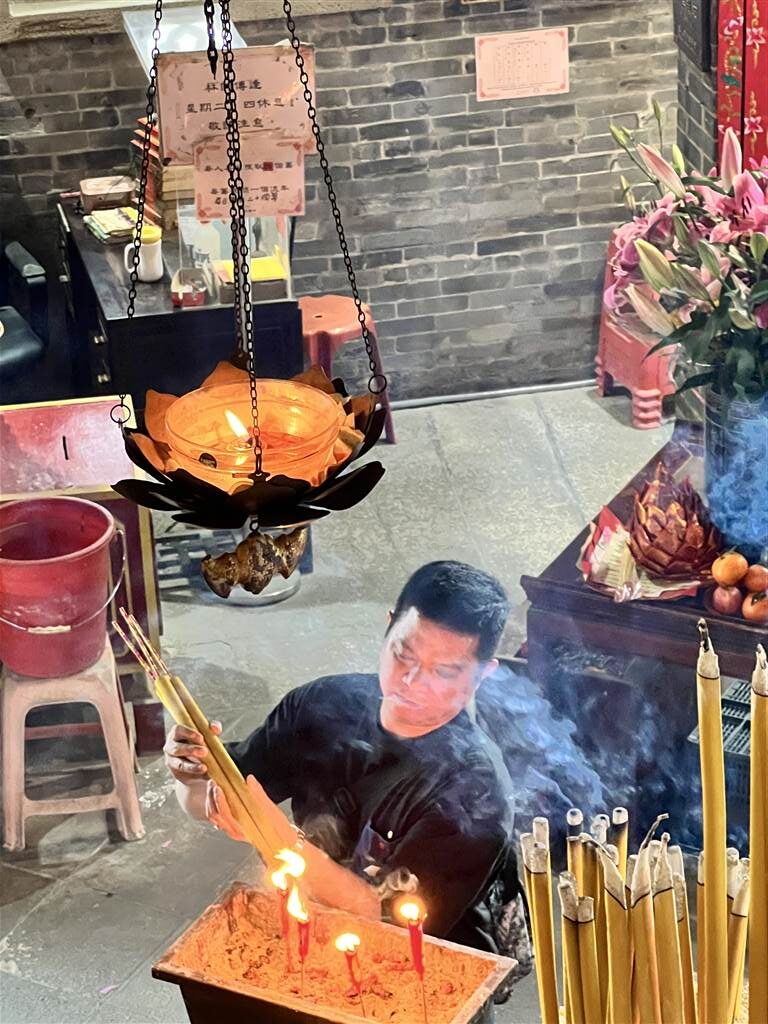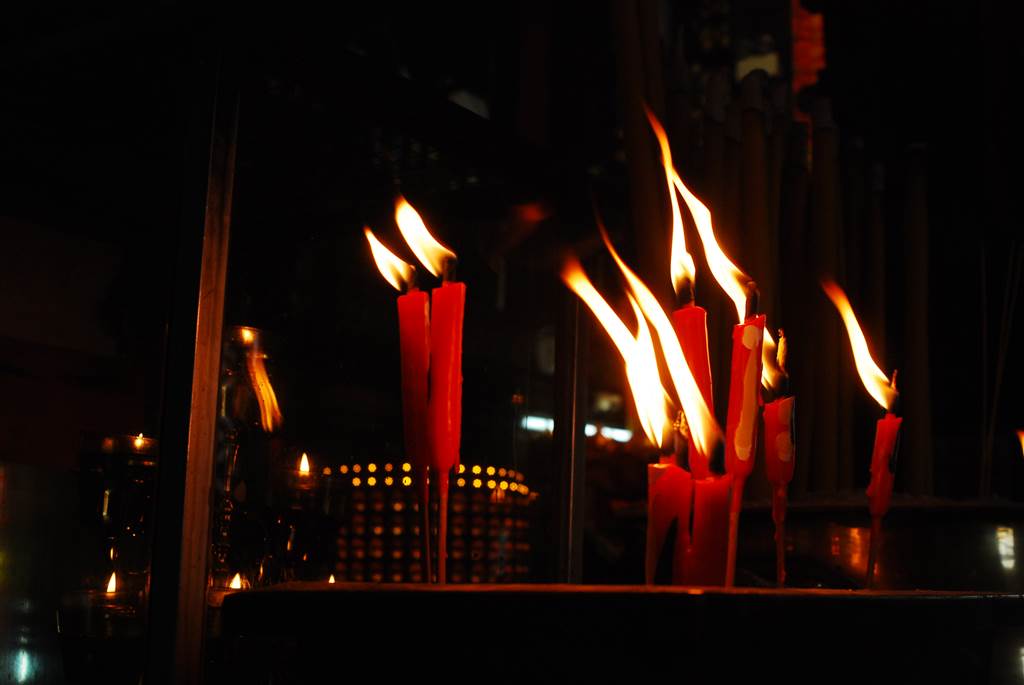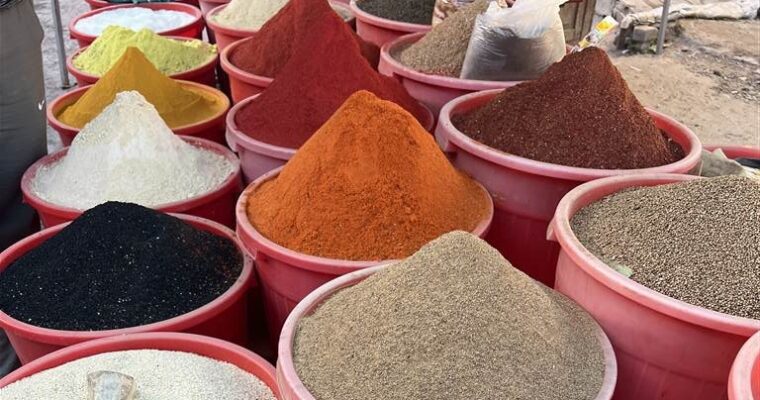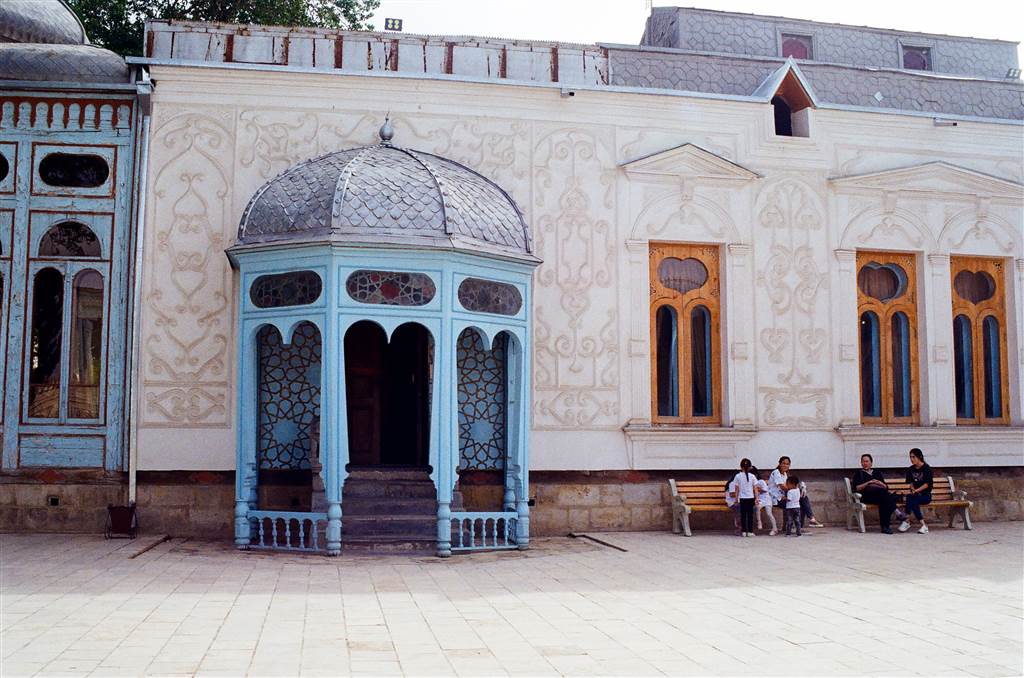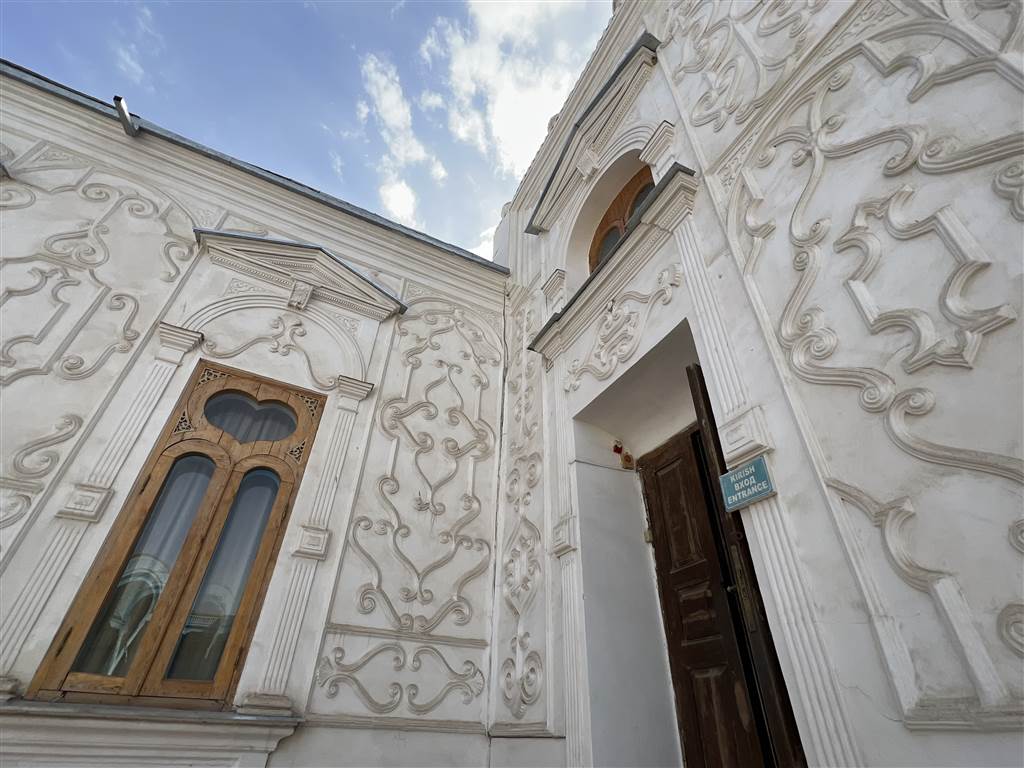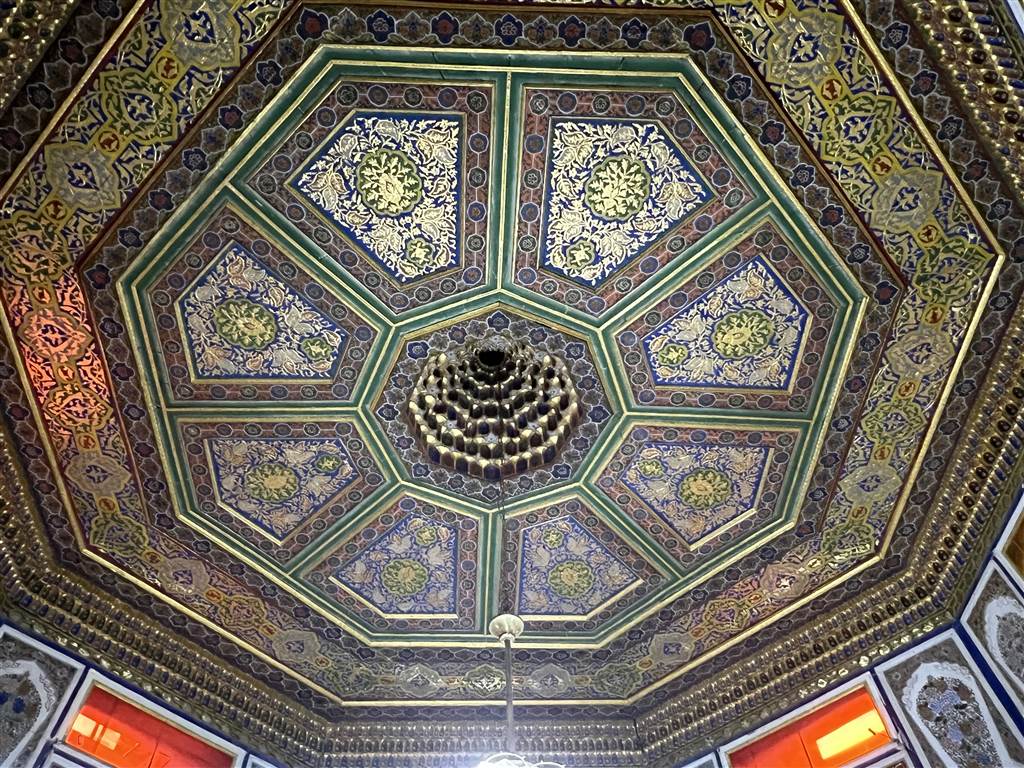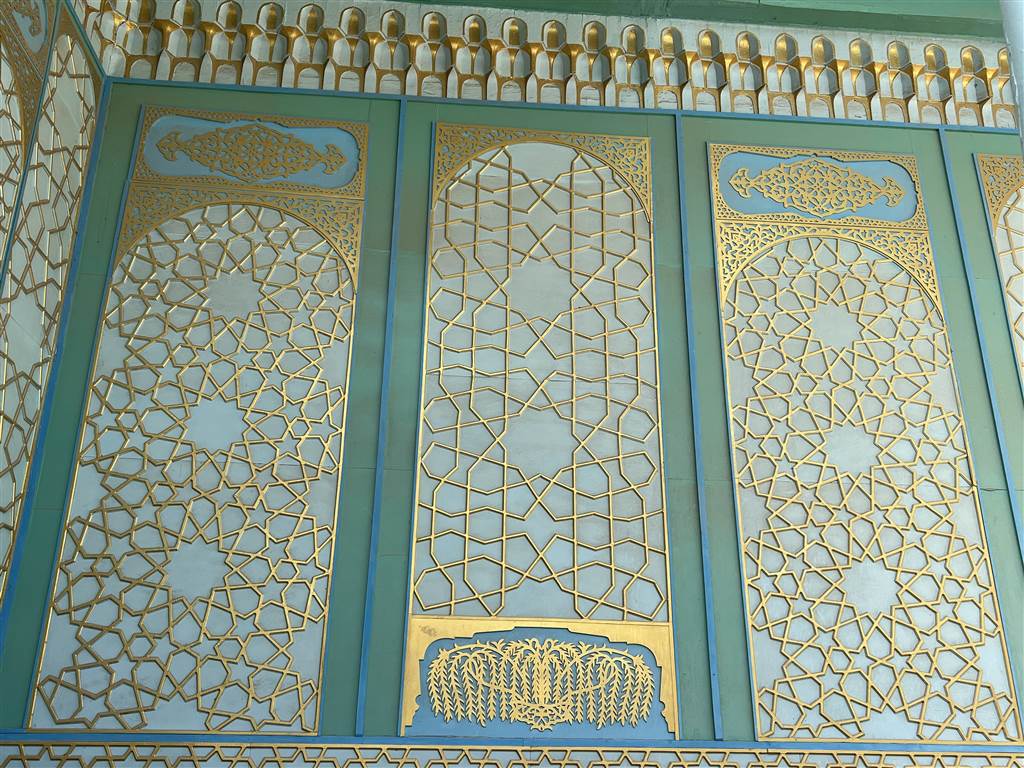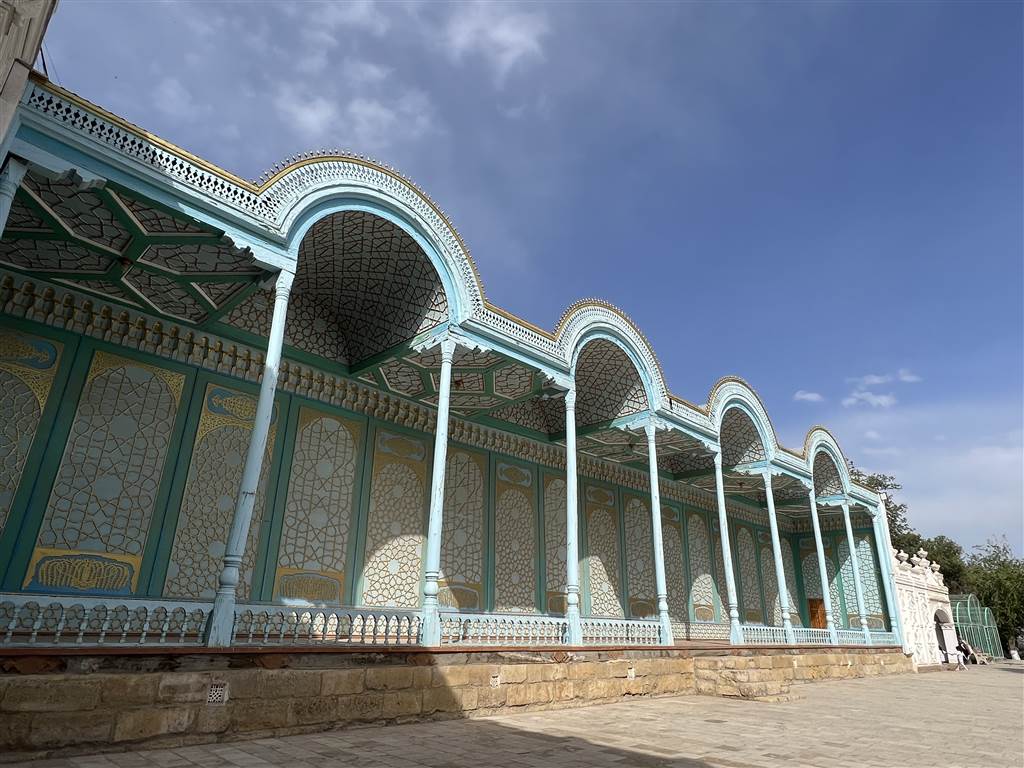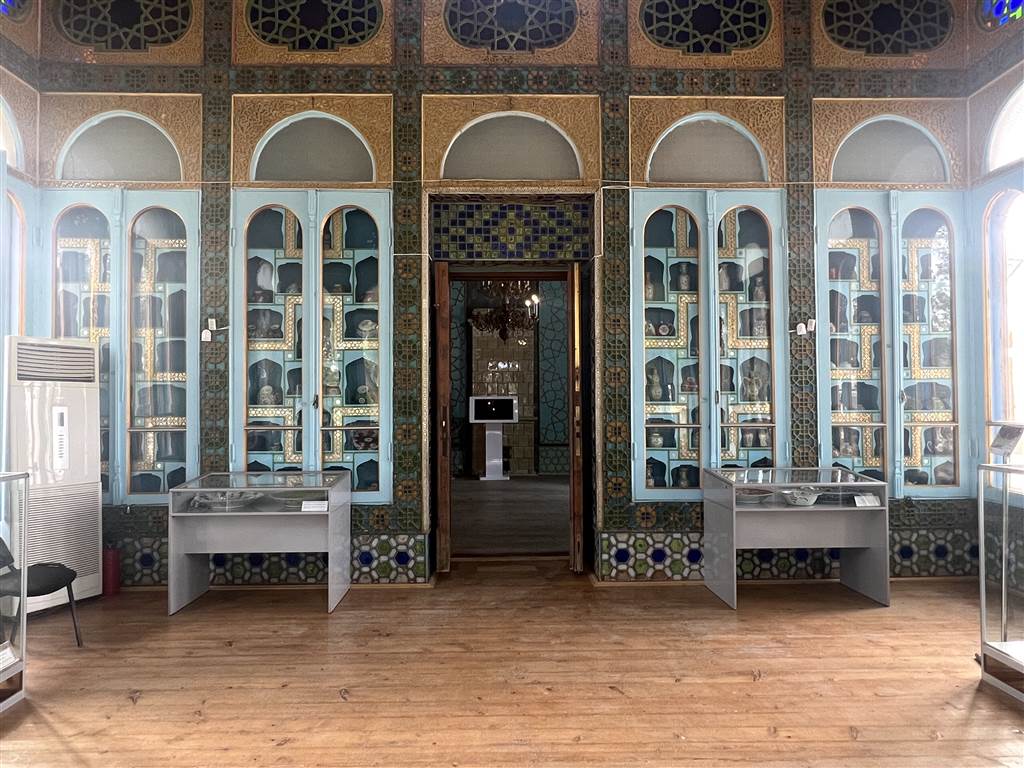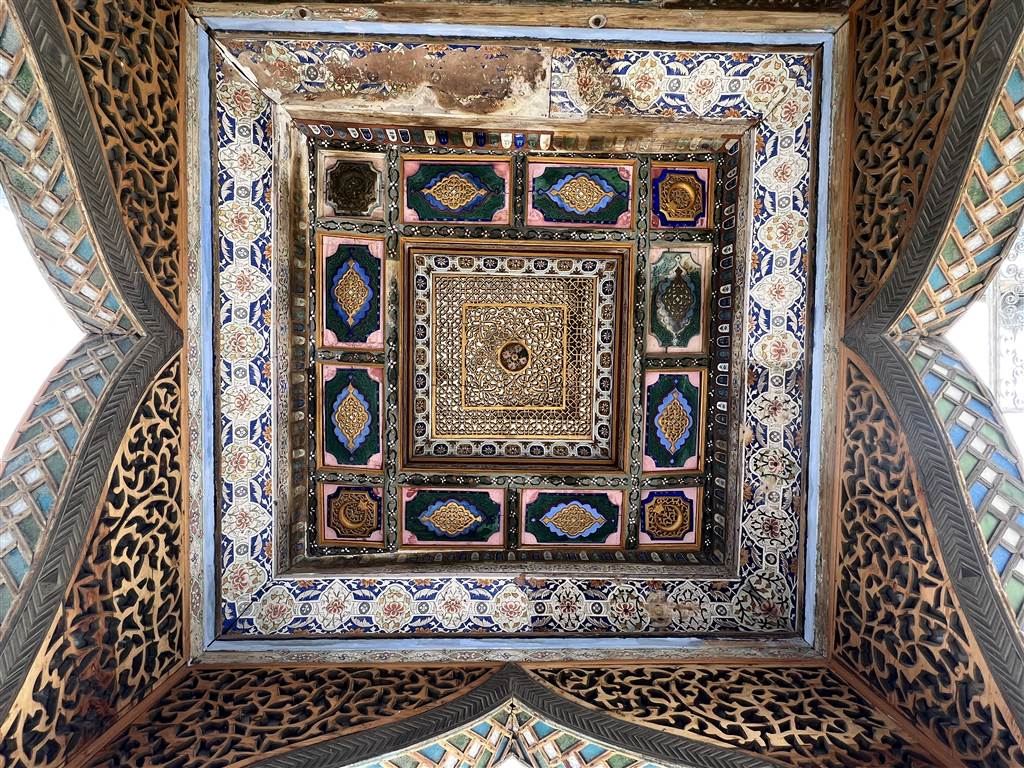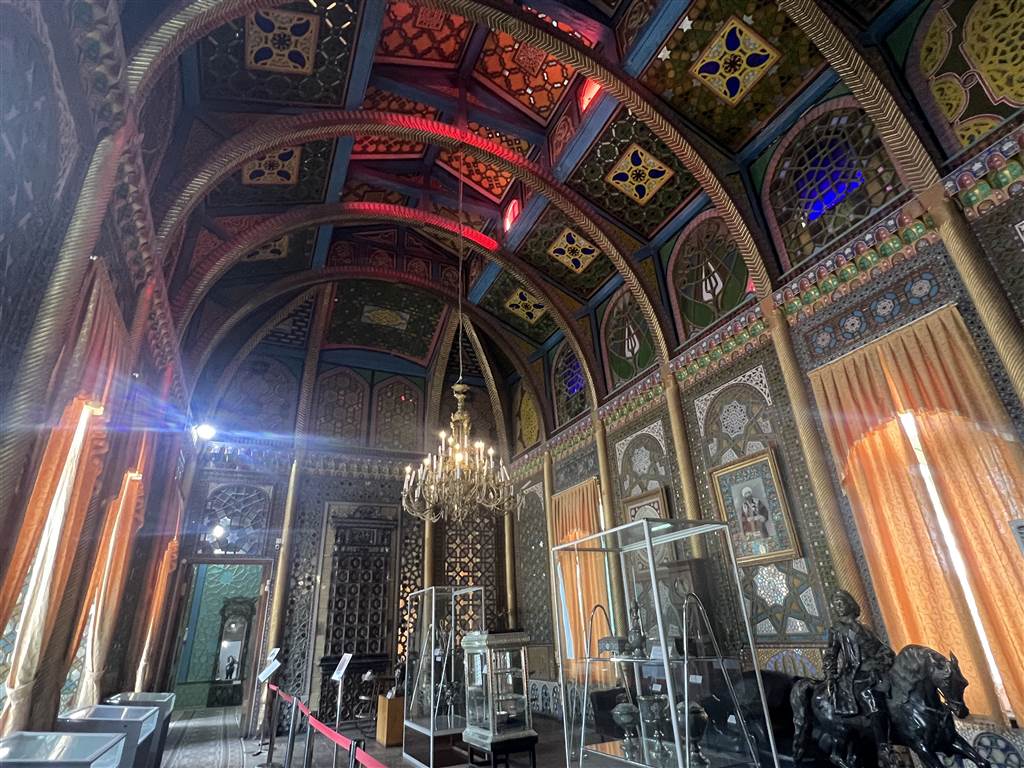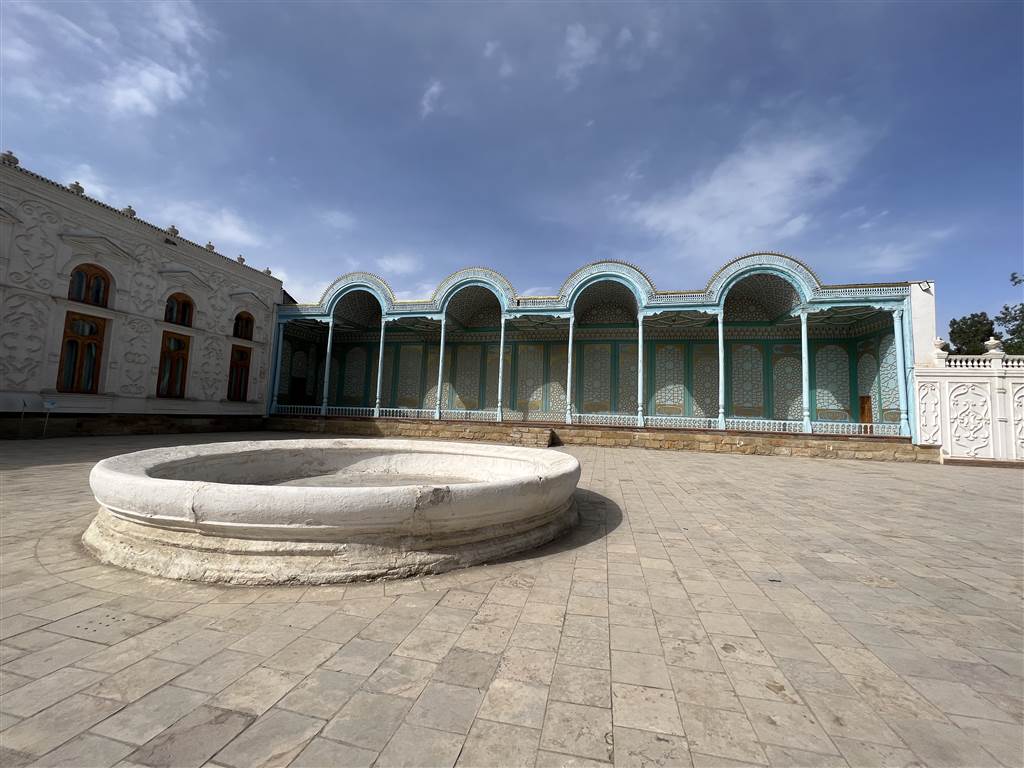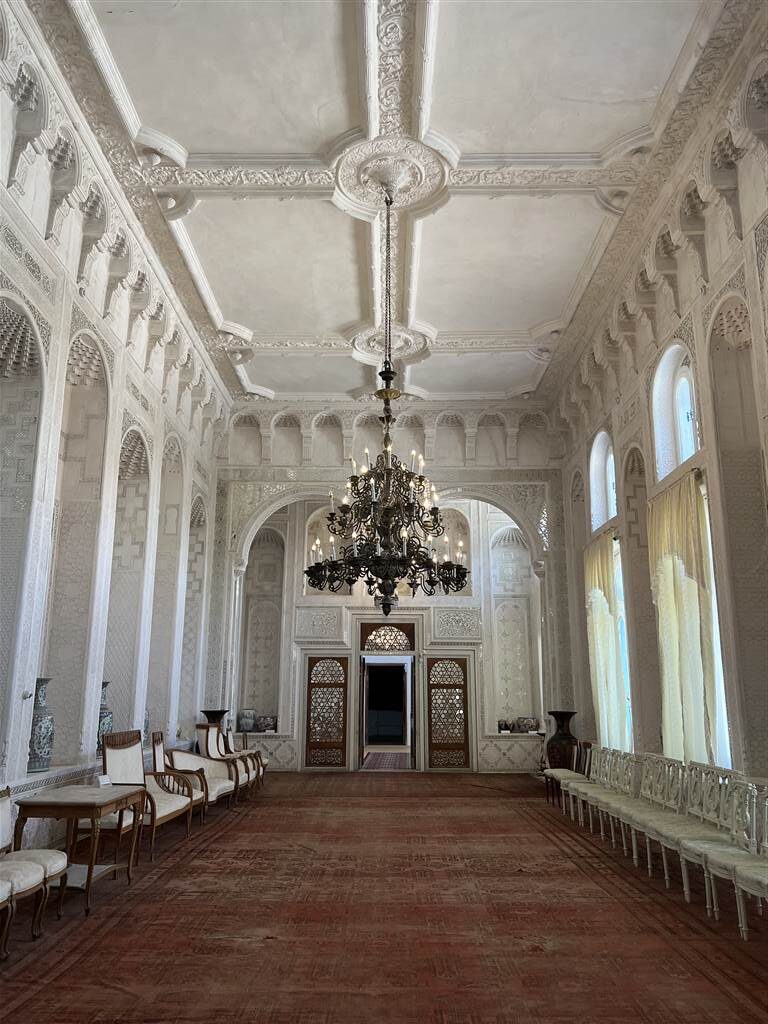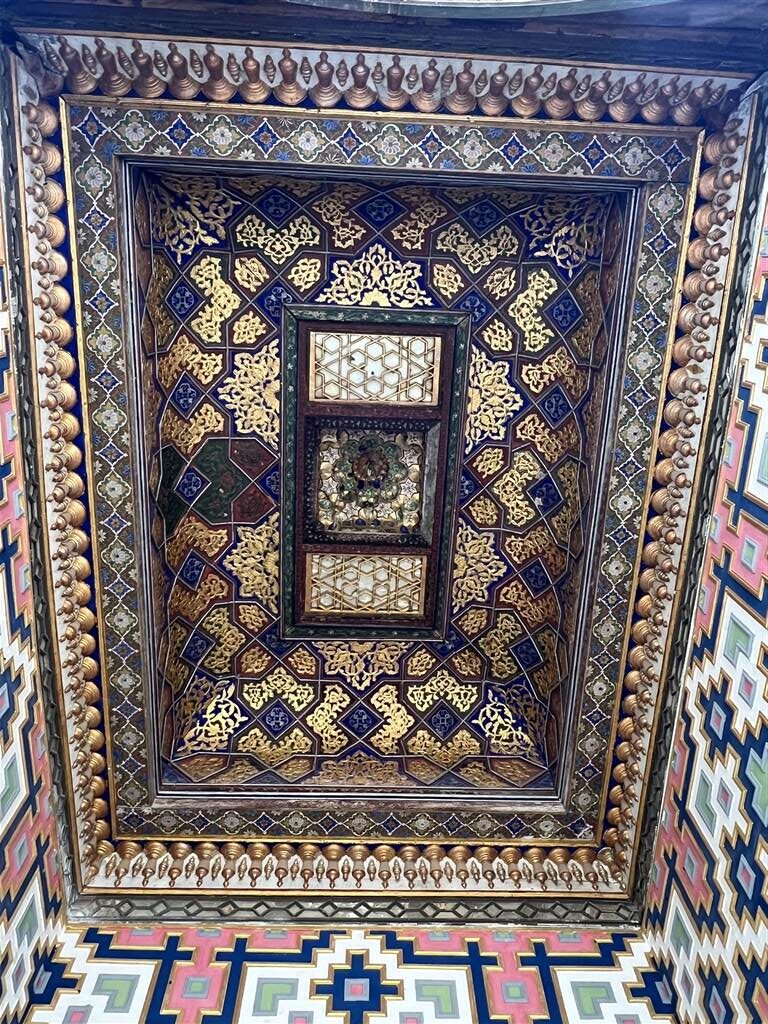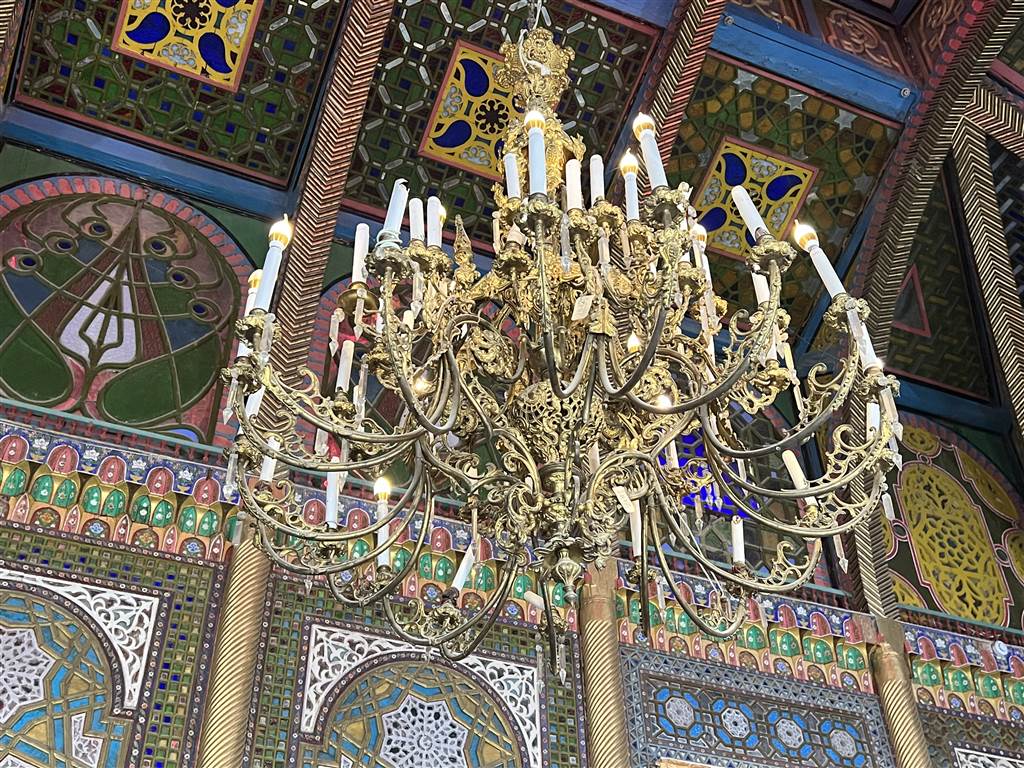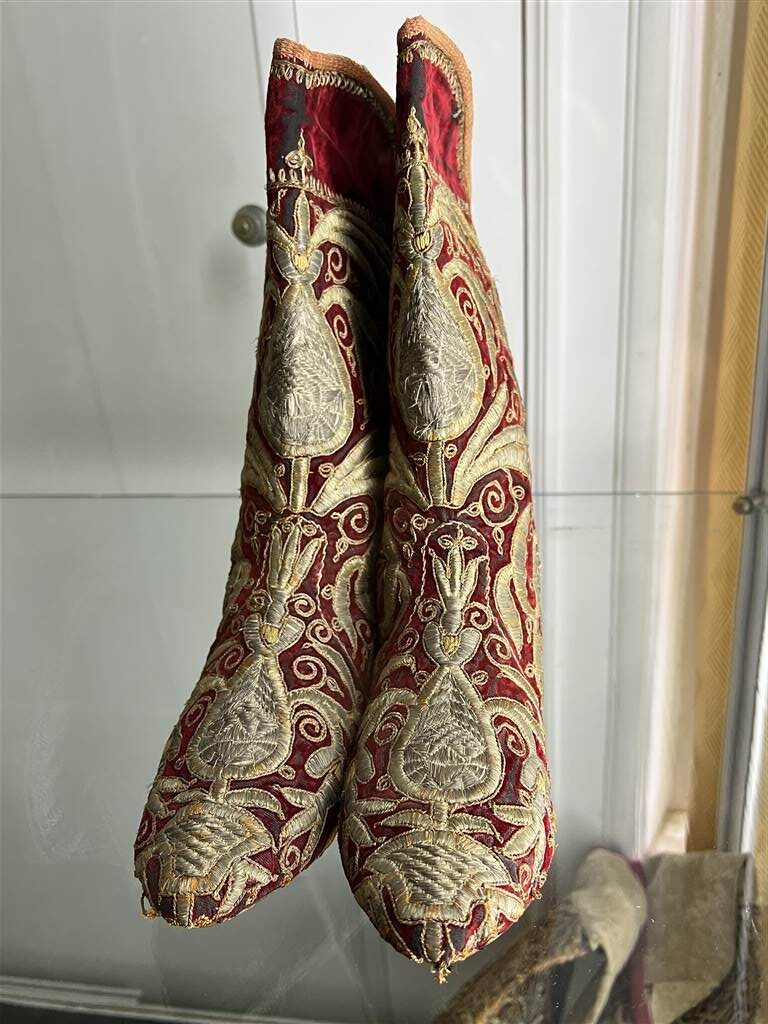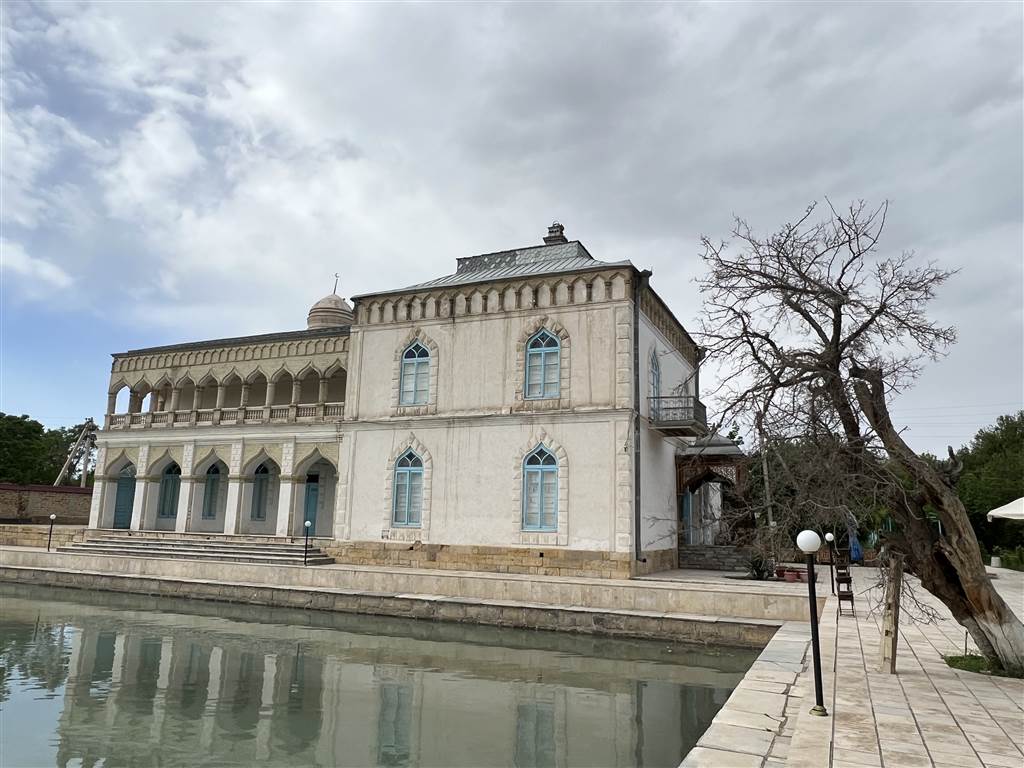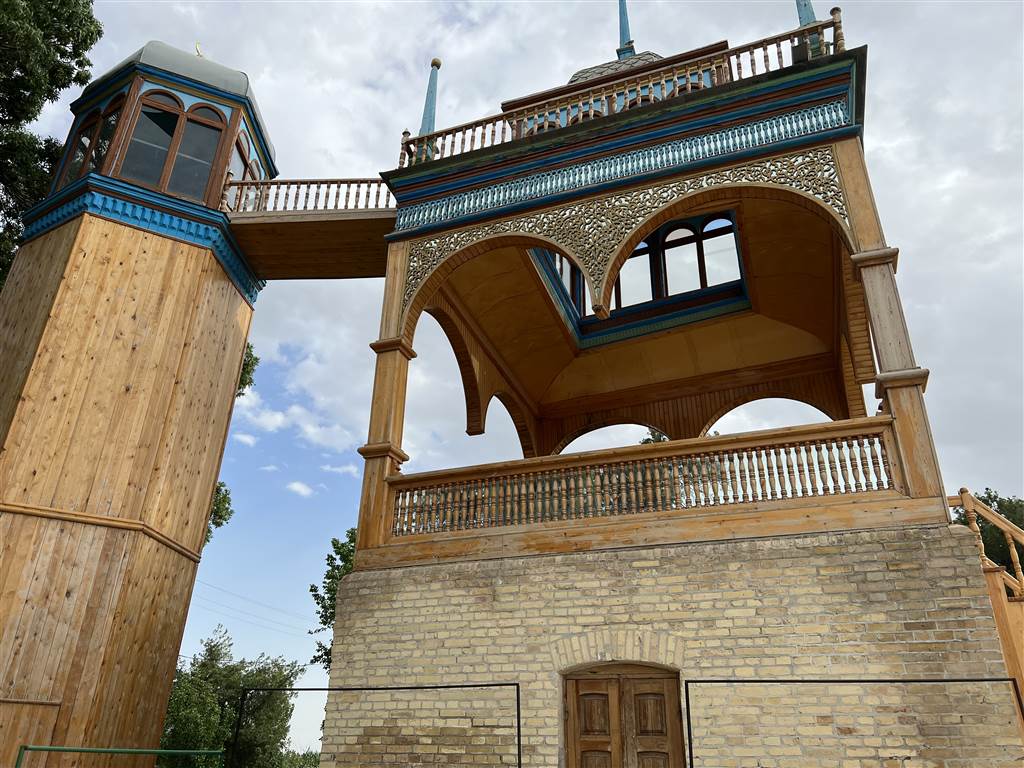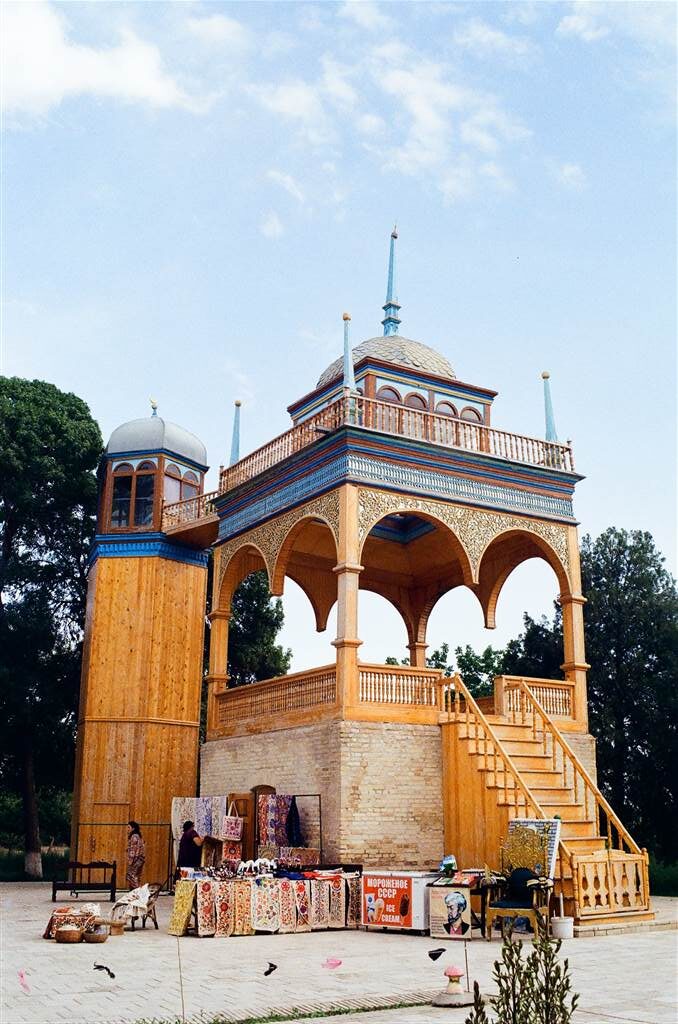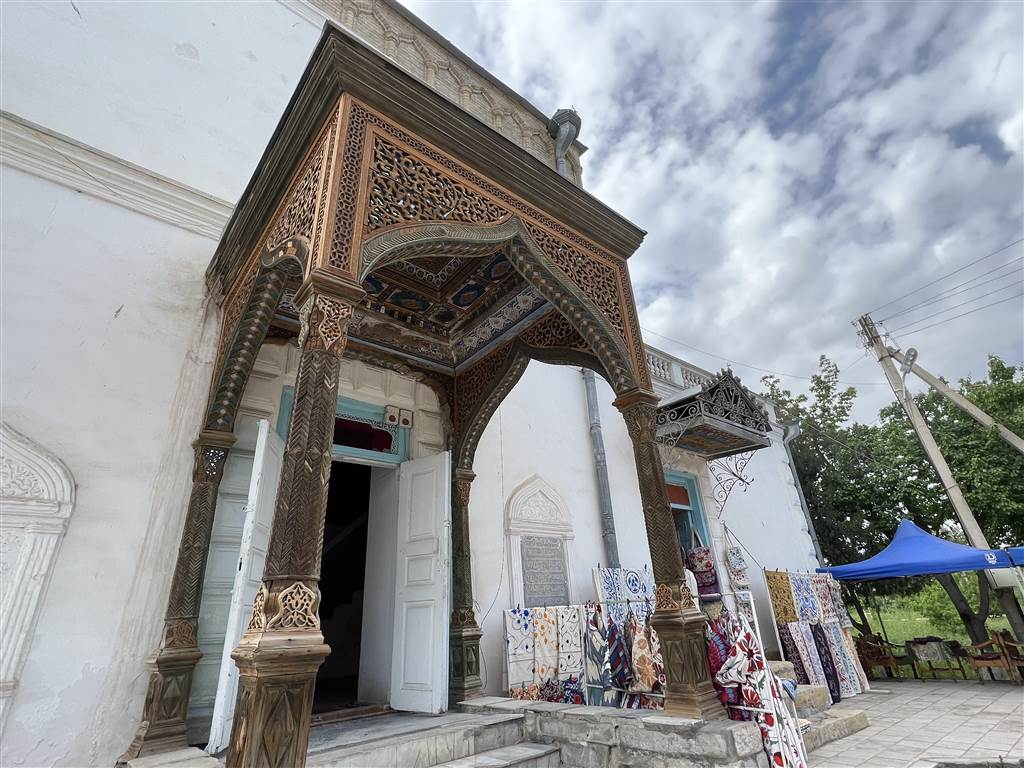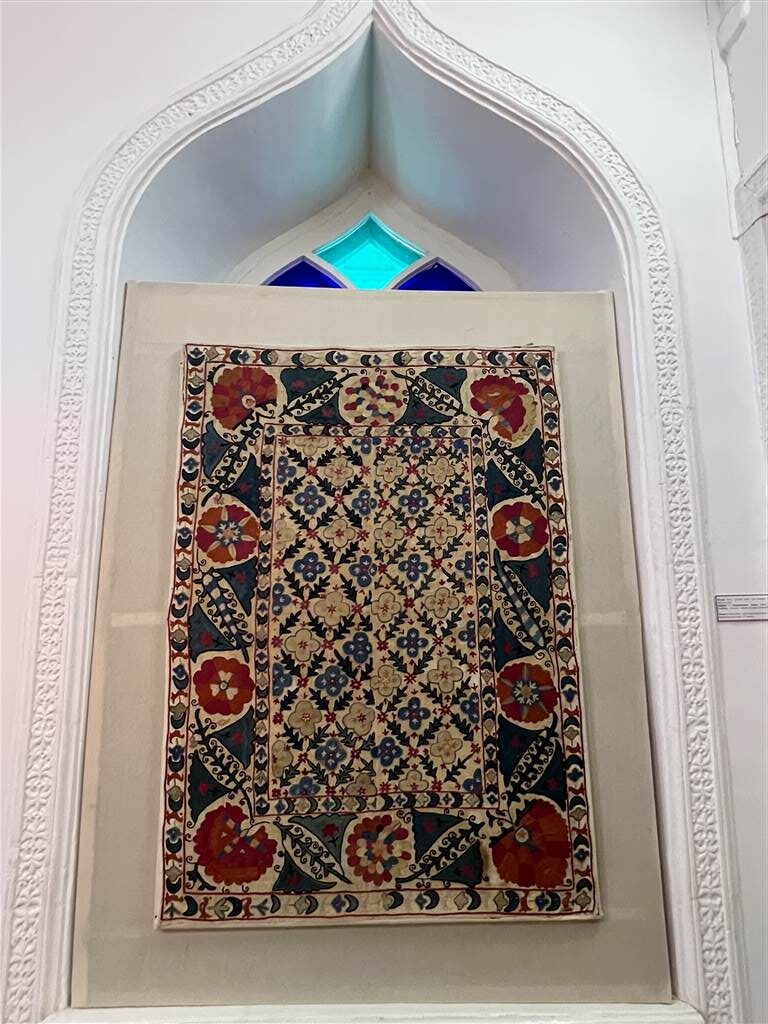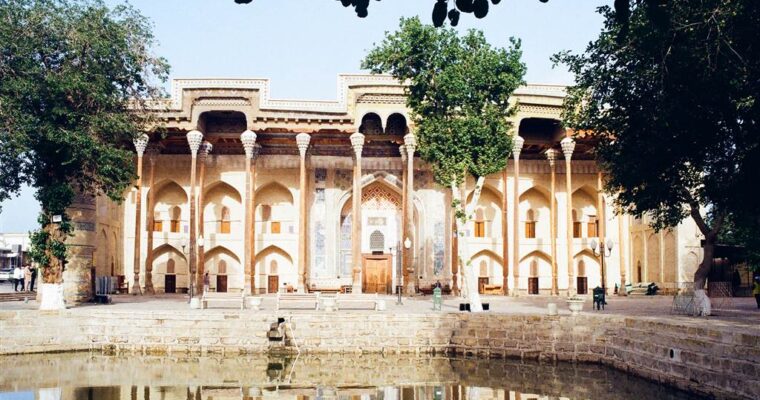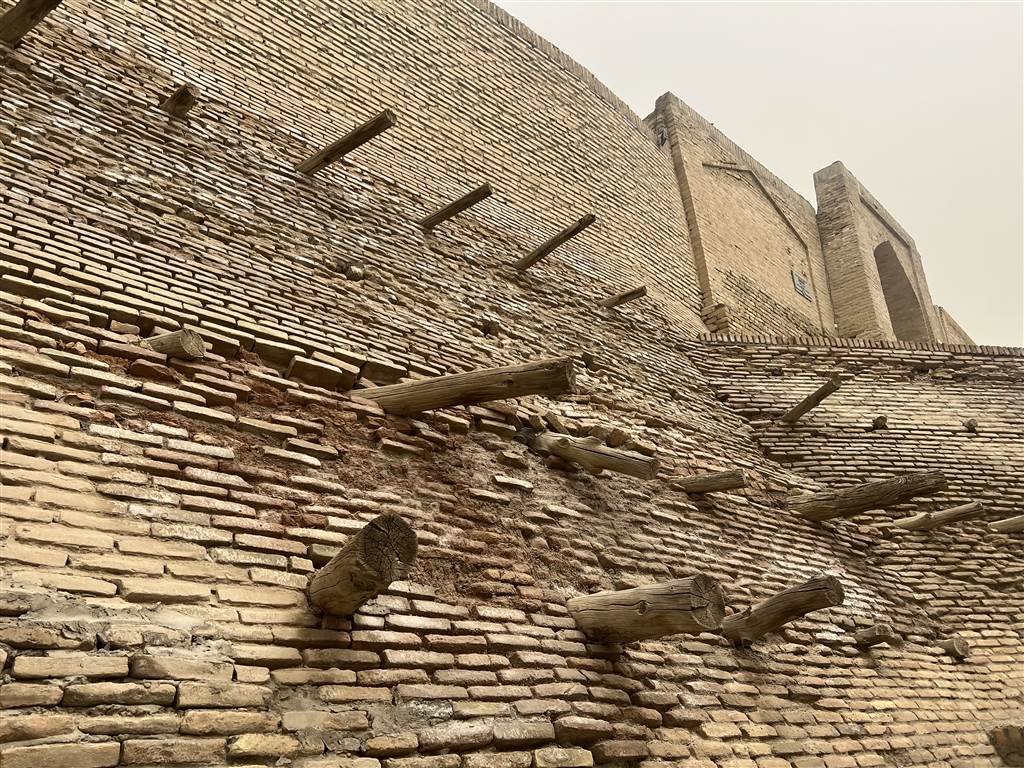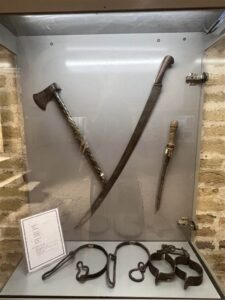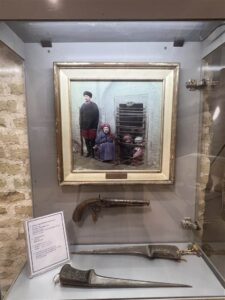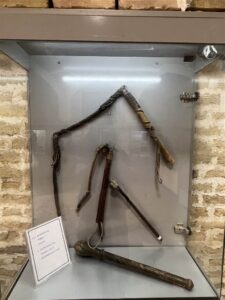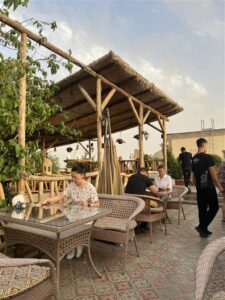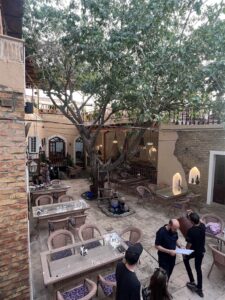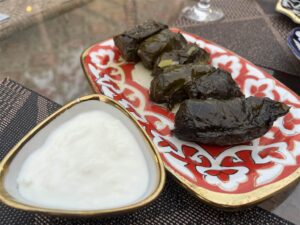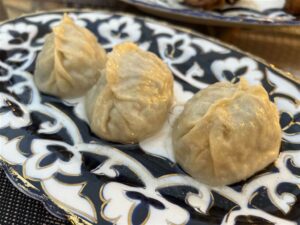The Zindan Jail is very close to the Ark of Bukhara and it stands for haunting memories of torture, horror and incarceration. This may have been the second saddest sightseeing I have done in this trip in Uzbekistan. The saddest being the Muynak Ship Cemetery.
It is however very much worthwhile to visit, as in every culture there are expressions of the darkest strands of human nature. Uzbekistan is no exception and the Zindan Jail keeps it all real for us as tourists.
The History of the Zindan Jail
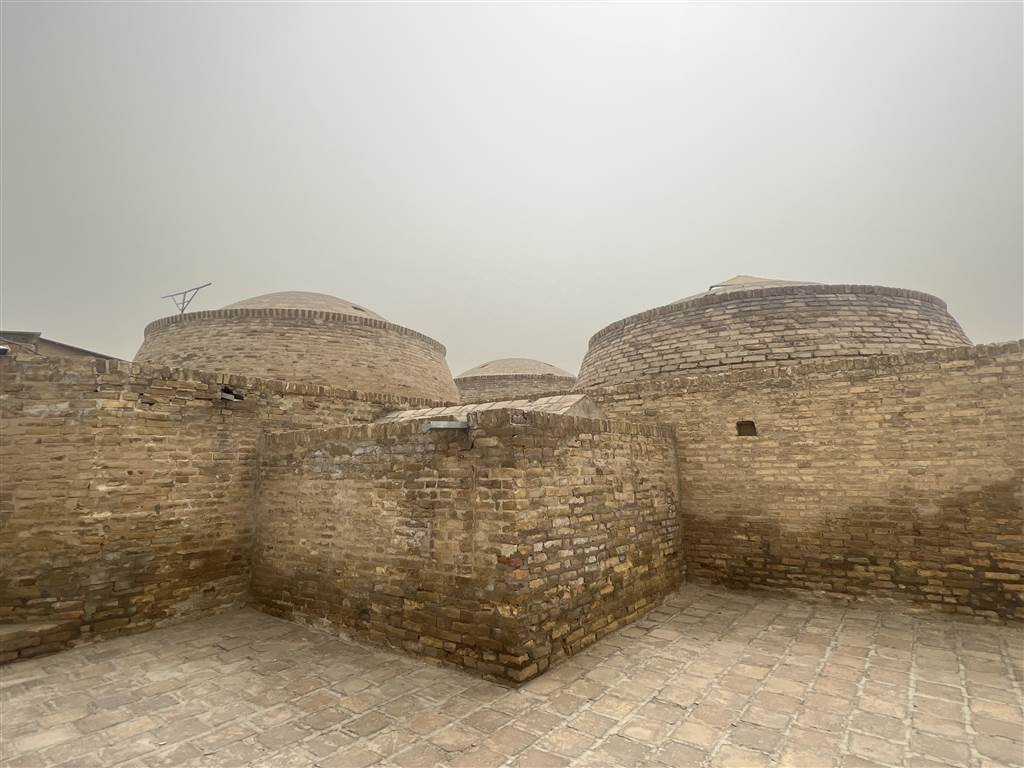
Despite its similarity in appearance with the Ark, the Zindan jail is relatively modern as an 18th century structure. Now a museum, the Zindan Jail has the official name of The Museum of History of Law and Court System of Bukhara.
In Persian, the word “Zindan” means “dungeon.” Inside this prison is the infamous “Bug Pit,” the Fourth Cell, a space below ground that was dark, damp, infested with bugs, rodents and even snakes. Some sources say that these tortuous creatures were dropped by the Uzbeks into the pit.
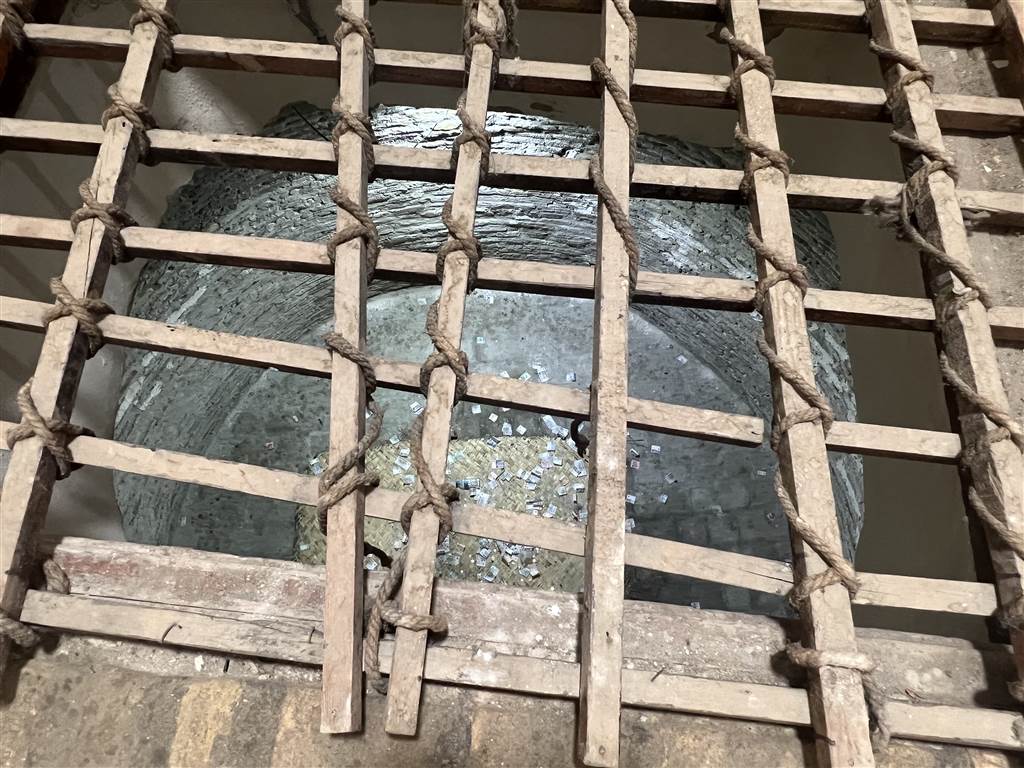
Known as the “kanakhona,” the 6.5-meter deep pit was “covered with an iron grill. Accessible only via a long 6-meter rope, the Bug Pit was reserved for the least favorite” of prisoners. It is said that in those conditions prisoners only stay alive for about three days.
The Bug Pit was where the two British soldiers, Stoddart and Connolly, that angered the Emir, were kept, tortured and horrified, before they were executed in the Registan before the Ark. Other than the two famous British prisoners discussed below, the prisoners that ended up in the Zindan Jail were debtors and those that failed to practice religion. The serious offenders were thrown into the Bug Pit.
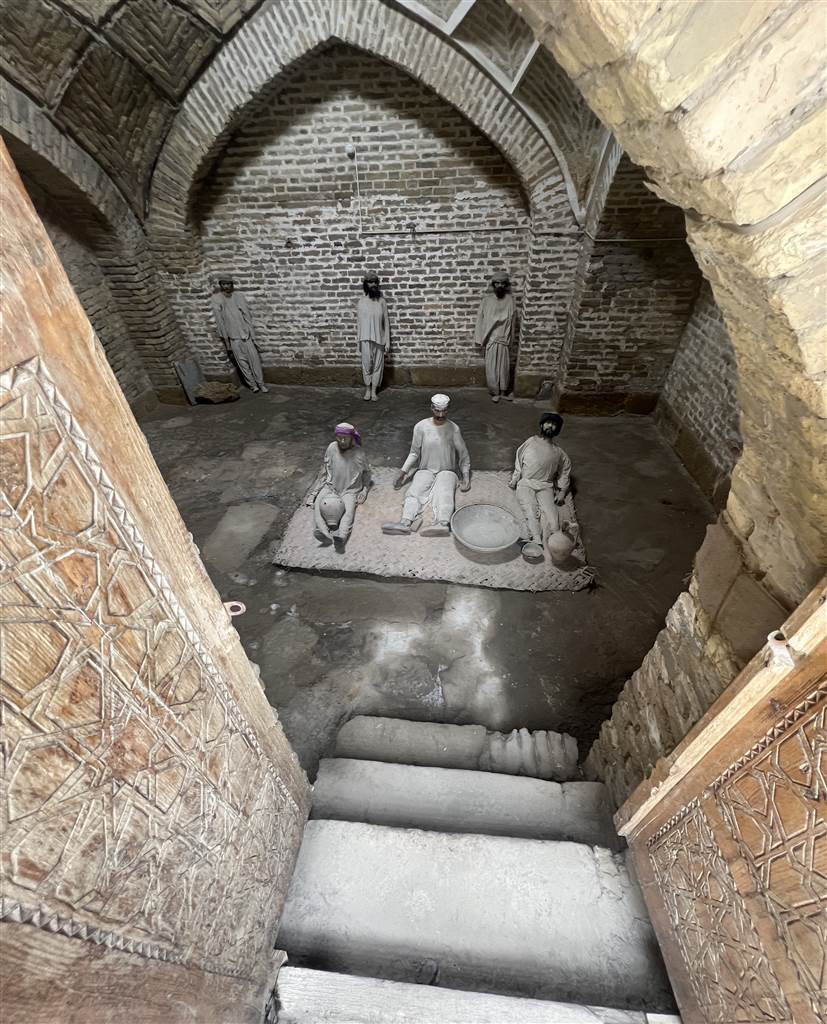
Connolly and Stoddart
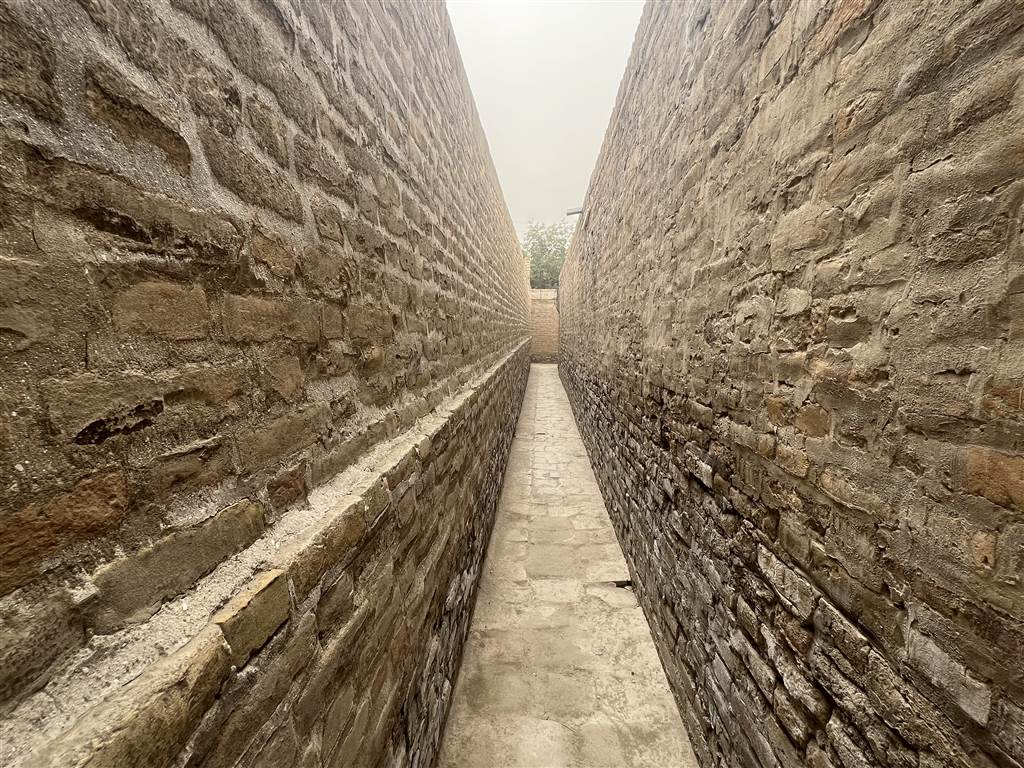
The British Lieutenant Colonel Stoddart was sent by the British Government to Bukhara on a diplomatic mission during the British invasion of Afghanistan in 1838. The intention of the British Government was simply to extend an olive branch to the Bukharan Emir, at the time Nasrulla Khan. The message carried by Lieutenant Colonel Stoddart was that the British would like the Bukharan Emir to know that the British shall not extend their campaign in Afghanistan to this part of Central Asia, that Bukhara would be safe from invasion.
Nasrulla Khan was known for his rather volatile and precarious temperaments. When Lieutenant Colonel Stoddart failed to get off his horse as he approached the Ark, and failed to bow to the Emir, Nasrulla Khan was enraged. He sent Lieutenant Colonel Stoddart to the Bug Pit.
A few years later came Captain Connolly, who was a fellow officer of Lieutenant Colonel Stoddart. He came to Bukhara intending to rescue Lieutenant Colonel Stoddart, but not with express support of the British Government. Although his effort to place Lieutenant Colonel Stoddart in better lodging met with some success, Nasrulla Khan felt free to dispose of both of them when news of the British failure to take Kabul reached Bukhara.
A total of three years passed, where Lieutenant Colonel Stoddart was kept in the Bug Pit, on and off, between 1838 to early 1842. Both men were beheaded in the Registan in front of the Ark in 1842.
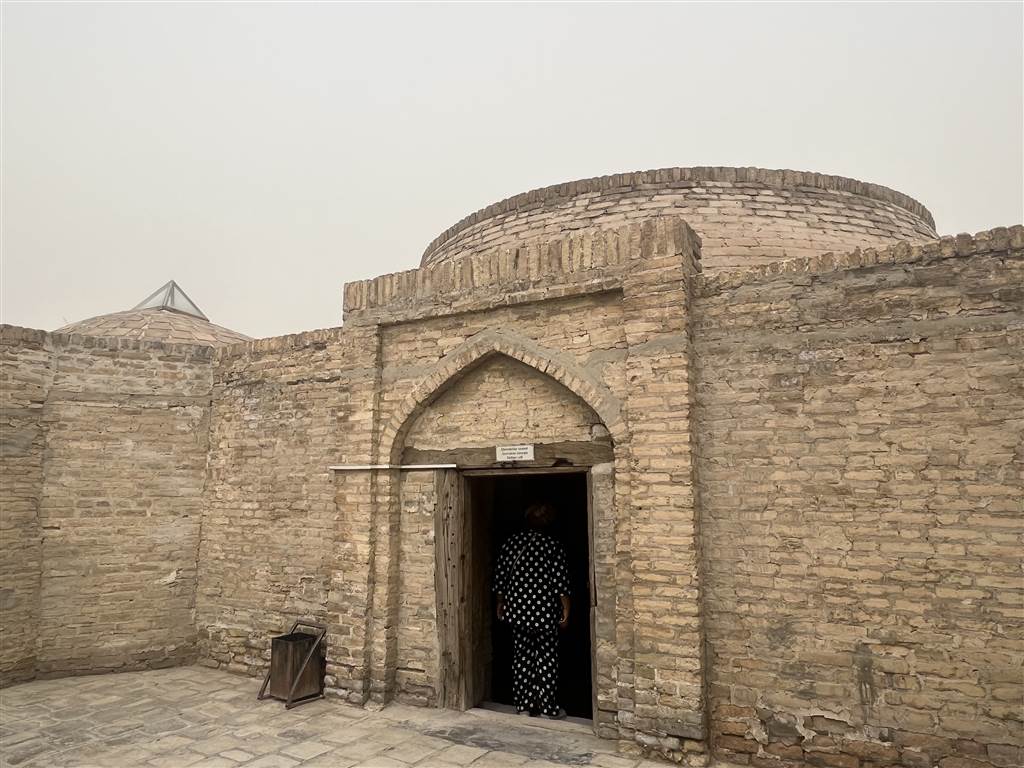
Suffice to say, that the men were victims of diplomatic failures, both a fault of their own as well as the British Government’s.
The Zindan Jail Today
At the site of the former Zindan Jail, there is now a museum with exhibits introducing the various aspects of Uzbekistan’s penal system in those times. Mannequins now standing in the bug pit convey just a taste of the horror that once took place there.
The museum contains some explanations on the court system in Bukhara, mainly showing visitors how the two streams of military and civilian criminal justice was handled separately. Needless to say, Sharia Law was the source of judicial authority in Bukhara.
There are also some exhibits of the instruments of torture.
A Word about the Old Bukhara Restaurant
For dinner, we went to the Old Bukhara Restaurant. We held high expectations because there were some very good reviews of its food and ambience. In order to secure a table at this exceedlingly popular restaurant, we went there quite early, around 5:30pm or so.
There were some frustrations there. The restaurant was fully closed during the afternoon, and no matter how much I pleaded they would not let us in anytime before 6pm. There was quite a bit of rudeness in between as well.
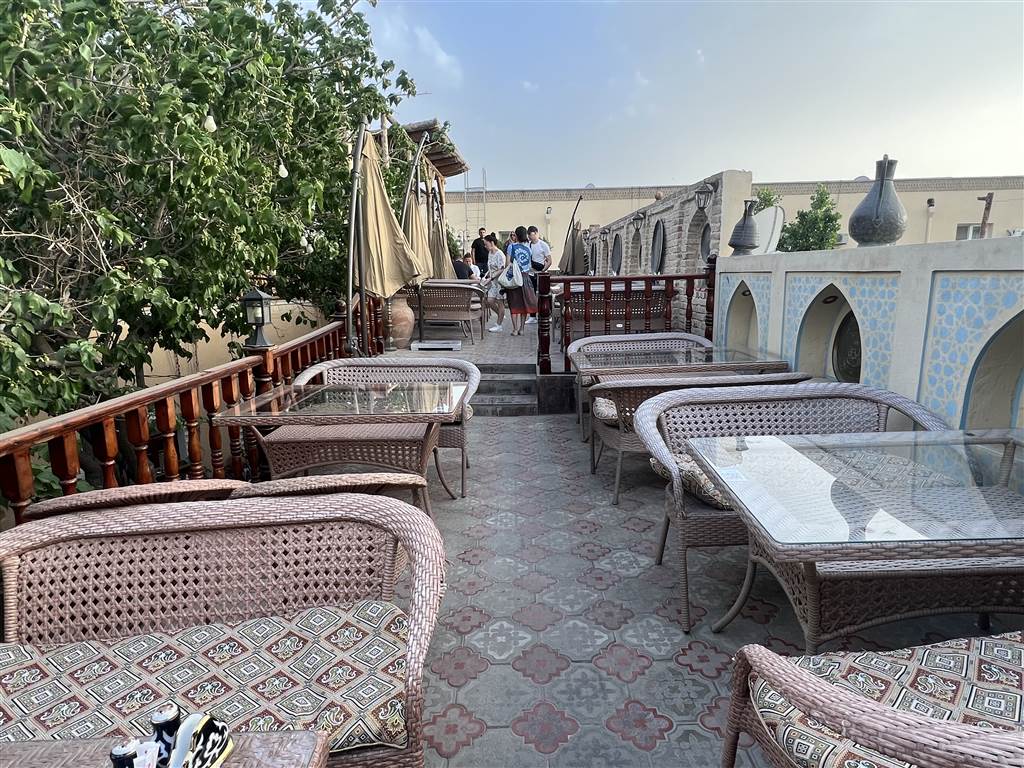
In any event, we persisted and were indeed one of the first few parties being seated up on the terrace. We were excited about our food, but half way through our dinner, the storm that had been looming all day resurfaced. Strong winds were blowing. The trees wavered, the umbrellas were falling on our table and our dining ware were all flipping. It was to a point where we thought we could be injured in this scenario, and we had to hurry up to finish everything and leave.
The food was fair, but the overall experience was terrible.
By the time we returned to the hotel, the sandstorm that menaced Bukhara for a whole day turned into a severe thunderstorm with heavy rain. Perhaps in this way the quick-tempered Nasrulla Khan haunted us from his grave through the precariousness of this weather.
Sources
Descriptions on site at the Zindan Jail.
Sophie Ibbotson, Uzbekistan, Bradt Travel Guide (2020) at 235, 240.
Atlas Obscura, The “Bug Pit” at Zindon Prison.

